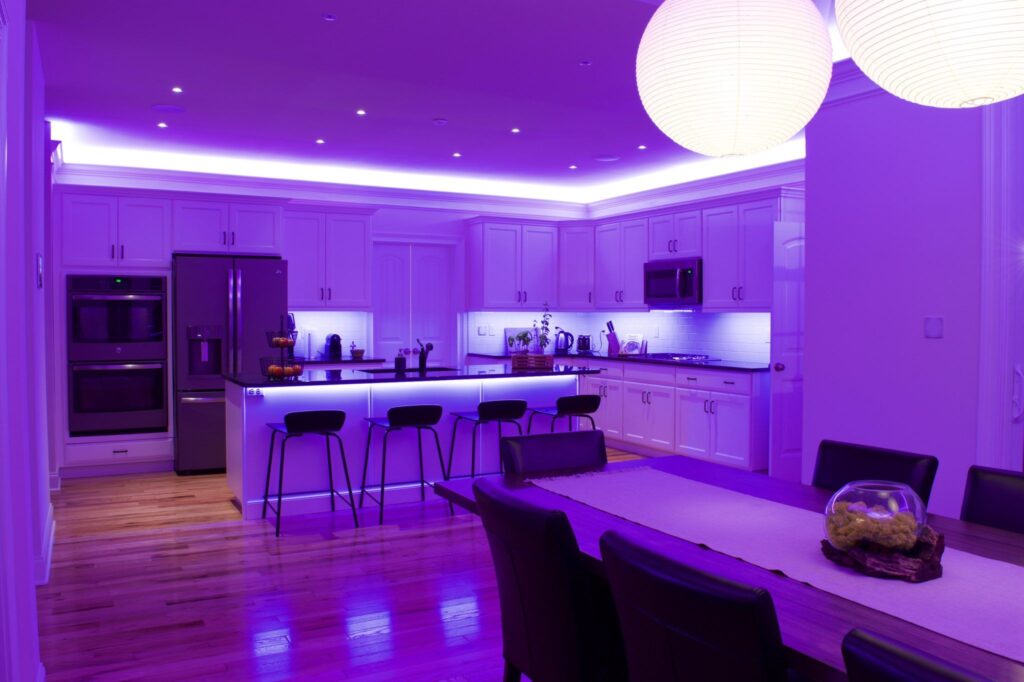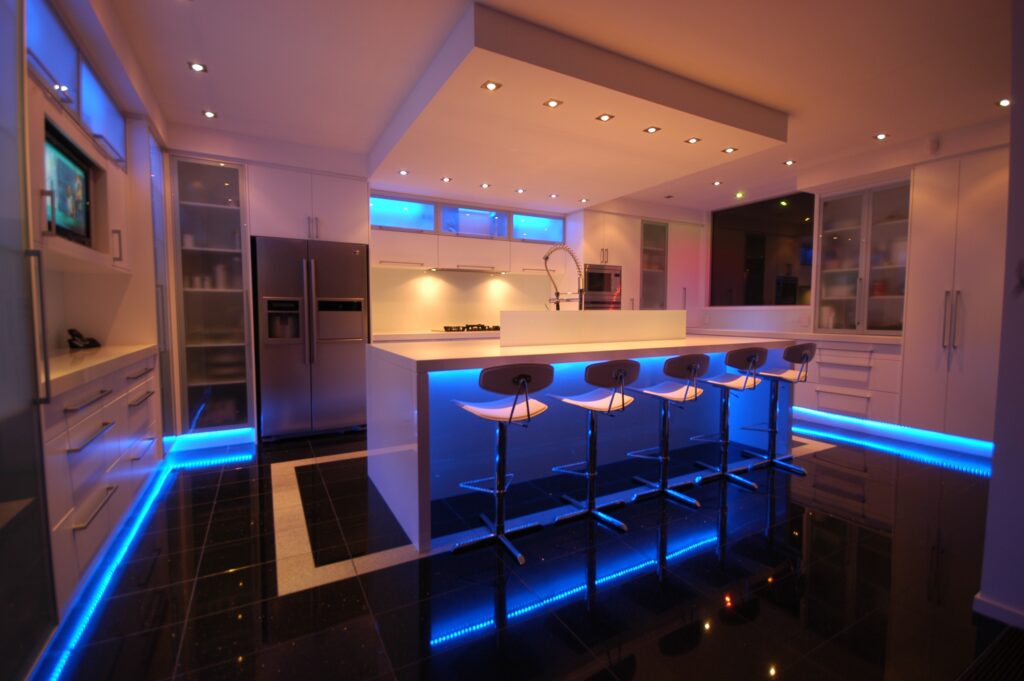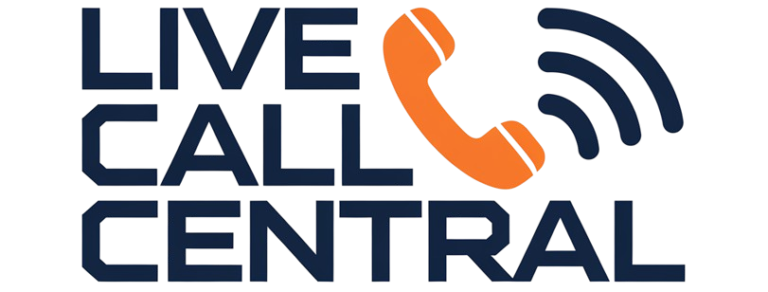
In today’s world, energy efficiency and sustainable living are becoming increasingly important. Whether it’s in homes, businesses, or public spaces, lighting plays a crucial role in our daily lives. One of the most significant changes in recent decades has been the shift from traditional lighting technologies—like incandescent and fluorescent bulbs—to LED (Light Emitting Diode) lighting. This transformation isn’t just a technological upgrade; it’s an environmentally conscious and cost-effective decision.
If you’re still using older lighting systems, you might be wondering: What are the actual benefits of switching to LED lighting? This article explores the key advantages of upgrading to LED lighting, from energy efficiency and durability to environmental impact and improved lighting quality.
1. Exceptional Energy Efficiency
One of the most prominent benefits of LED lighting is its superior energy efficiency. LEDs consume significantly less power compared to traditional incandescent and fluorescent lights.
- Energy Savings: LEDs use up to 80% less energy than traditional incandescent bulbs. A 10-watt LED bulb can produce the same amount of light as a 60-watt incandescent bulb.
- Lower Electricity Bills: Because they use less power, LEDs contribute to lower utility bills. This is especially beneficial in commercial or industrial settings where lighting is used extensively.
This level of efficiency doesn’t just help with cost reduction—it also means a lower carbon footprint, aligning with broader goals of sustainability.
2. Long Lifespan
Another major advantage of LED lighting is its longevity.
- Durability: LED lights can last between 25,000 to 50,000 hours. In contrast, an incandescent bulb might last only around 1,000 hours, while a compact fluorescent light (CFL) could reach up to 8,000 hours.
- Fewer Replacements: Since LEDs last so much longer, they reduce the frequency and cost of replacements. This is especially helpful in hard-to-reach areas or locations with many fixtures.
By choosing LEDs, you’re making a long-term investment in lighting infrastructure that will serve you for years with minimal upkeep.
3. Environmentally Friendly
LEDs are a green technology in more ways than one.
- Lower Emissions: Their energy efficiency means they indirectly produce fewer greenhouse gases. Generating electricity often involves burning fossil fuels, so using less electricity helps reduce overall emissions.
- No Hazardous Materials: Unlike CFLs, which contain small amounts of mercury, LEDs are free from toxic elements. This makes disposal safer and more environmentally responsible.
- Recyclable Components: Many parts of LED lights are recyclable, reducing waste and conserving resources.
Switching to LED lighting supports global sustainability efforts and helps individuals and organizations meet green building standards and certifications.
4. Improved Light Quality
LEDs provide better quality lighting in terms of brightness, color accuracy, and distribution.
- Brightness: LEDs are available in a wide range of brightness levels, measured in lumens. They can be tailored to suit any setting—from soft ambient lighting to intense task lighting.
- Color Rendering Index (CRI): LED lights typically have a higher CRI, which means they render colors more accurately and vividly. This is essential in environments like retail stores, art galleries, and medical facilities.
- Directional Lighting: Unlike traditional bulbs that emit light in all directions, LEDs emit light in a specific direction. This helps reduce wasted light and improves efficiency in applications like spotlights, downlights, and desk lamps.
Whether you’re reading a book, working in an office, or setting up a display, LEDs provide the clarity and control needed for any task.

5. Design Flexibility
LED lighting offers unmatched flexibility in terms of design and usage.
- Compact Size: LEDs can be as small as a pinhead, allowing them to be integrated into almost any design or space.
- Variety of Styles: From strips and panels to smart bulbs and retrofits, LEDs come in a variety of styles to meet aesthetic and functional needs.
- Color Options: They can produce a full spectrum of colors without the need for filters. RGB (red, green, blue) LEDs are especially popular for decorative lighting and entertainment systems.
This versatility makes LED lighting a favorite choice for architects, interior designers, and homeowners looking to achieve specific visual effects.
6. Enhanced Safety
LEDs are much safer than traditional lighting options.
- Lower Heat Emission: Traditional bulbs convert a lot of energy into heat. LEDs, on the other hand, remain cool to the touch, significantly reducing the risk of burns or fires.
- Stable Operation: LEDs are less likely to flicker, which can cause discomfort or health issues like eye strain and headaches.
- Shock Resistance: Since they are solid-state lights, LEDs are more resistant to shocks, vibrations, and external impacts, making them suitable for rough conditions.
These safety features make LEDs an ideal choice for homes with children or pets, as well as for workplaces where safety regulations are a priority.
7. Instant Lighting
LEDs light up instantly when switched on, with no warm-up time.
- Immediate Full Brightness: Unlike fluorescent lights that may flicker or take time to reach full brightness, LEDs achieve maximum illumination immediately.
- Reliable in Cold Temperatures: LEDs perform well in low temperatures, making them excellent for outdoor use, walk-in refrigerators, or freezers.
This feature is crucial in emergency lighting, motion-activated systems, or areas where immediate illumination is required.
8. Smart Technology Integration
LEDs are the backbone of modern smart lighting systems.
- Dimming Capabilities: Many LED bulbs can be dimmed, offering control over brightness and ambiance.
- Remote Control: With Wi-Fi or Bluetooth integration, LED lights can be controlled through smartphones or smart home systems.
- Automation: You can schedule lights to turn on or off at specific times, or set them to respond to environmental triggers like motion or daylight.
Smart LED systems contribute to convenience, energy savings, and even security, by simulating occupancy when you’re not home.
9. Reduced Maintenance Costs
With their long lifespan and durable build, LEDs significantly reduce maintenance costs.
- Less Frequent Replacement: As noted, you won’t need to replace LEDs as often as traditional bulbs.
- Lower Labor Costs: Especially in commercial or industrial setups, this leads to savings in labor and downtime.
In large-scale installations, the maintenance savings alone can justify the upgrade cost over time.

10. Cost-Effectiveness Over Time
While LED lights may have a higher upfront cost, they are more cost-effective in the long run.
- Quick Payback: Energy and maintenance savings usually lead to a payback period of just one to three years.
- Rebates and Incentives: Many utilities offer rebates or incentives for switching to energy-efficient lighting, reducing the initial investment further.
This makes upgrading to LEDs not only a smart environmental decision but also a financially sound one.
Conclusion
The transition to LED lighting represents a monumental leap in both technology and sustainability. From impressive energy savings and long lifespans to enhanced safety and intelligent features, LEDs outperform traditional lighting solutions in nearly every way. Whether you’re looking to reduce your home’s energy bills, modernize your office space, or build an eco-friendly facility, switching to LED lighting is a practical, impactful choice.
With growing environmental awareness and technological advancements, the shift to LEDs isn’t just a trend—it’s the future of lighting. And the best part? Making the switch today means enjoying the benefits for years to come.


